Introduction
Carl Zeiss AG is acknowledged as one of the leading German manufacturers of high-end opto-electronic and optical equipment. With over 175 years of legacy, Zeiss AG is one of the oldest and most recognizable brands of consumer cameras and lenses and has since become a multi-national organization with its products selling all over the world. The headquarters of Zeiss is presently located in the town of Oberkochen, Southern Germany.
Main consumer products offered by Zeiss are premium-quality D-SLR cameras, mirror-less cameras, film cameras, photography lenses, cinematography lenses, smartphone lenses, binoculars, monoculars, riflescopes, spotting scopes, range finders, microscopes, and personal vision-care products. In the sports optics domain, Zeiss offers products in three categories: Terra (entry-level), Conquest® (mid-level), and Victory® (premium level).
History
Zeiss was established by Carl Zeiss, a German mechanic, as a small-time workshop in 1846. The workshop was located in Jena, Thuringia, Central Germany, and originally produced high-quality microscopes for the local public. Excellent optical performance and built quality made the microscopes popular during the 1950s and by 1861, the workshop had been transformed into a small factory with over 20 workers. Later in 1866, Carl Zeiss sold his 1000th microscope, thereby becoming one of the pioneers of optical devices in the 19th century.
Ernst Abbe, a physics lecturer at the University of Jena, joined the company in 1866, who was later followed by Otto Schott, a renowned glass technologist in 1884. The founder, along with these two gentlemen worked on several innovative products over the years, such as apochromatic lenses and the popular Abbe-Koenig roof prism. Other revolutionary features introduced by Carl Zeiss AG are P* (phase-correction) coating, T* (transparent) coating, LotuTec® (hydrophobic) coating, FL concept objective lenses, and SF concept focusing mechanism. Zeiss is one of the oldest German companies to actively use “Made in Germany” branding on its products.
Before the onset of WW1, Zeiss had become the world leader in the production of film cameras. In 1926, a new company called Zeiss Ikon was formed with the merger of four camera manufacturers, namely Contessa-Nettel, Ernemann, Goerz, and Ica. Zeiss Ikon offered world-class film cameras, rangefinder cameras, lenses for photography, and cinematography.
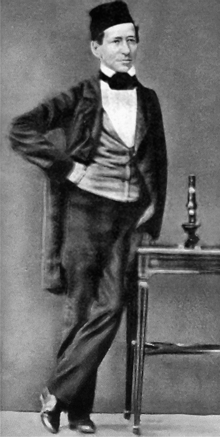
Zeiss Sports Optics
Zeiss AG launched its sports optics division with the acquisition of Hensoldt AG in 1928. Zeiss was already producing binoculars, riflescopes, and stereoscopic range finders by 1895, and this merger strengthened the sports optics business. The company also manufactured military-grade optics, such as binoculars, range finders, and other optical instruments for various armed forces before and during WW1. Zeiss did not abandon its military contracts after the war, which helped secure numerous orders for military-grade devices over the years.
Development of the First Zeiss Riflescope
The first reported riflescope made by Zeiss dates back to 1892, which was specially designed for machine guns and sniper rifles. The original Zeiss scopes were based on the Beaulieu-Marconnay design and did not feature variable magnification. In 1902, a riflescope with a prism erecting system was unveiled, which used prisms to focus light.
The first Zeiss riflescope with variable magnification was launched in 1907, which featured a 3X optical zoom feature and was designed for military and tactical purposes. The first hunting riflescope with optical zoom was offered to the public in 1921. Over the years, the company perfected the riflescope design by improving optical performance and incorporating several innovative features, such as lightweight body, bullet drop compensator, inner rail, reticle illumination, laser range finders, and high light transmission.
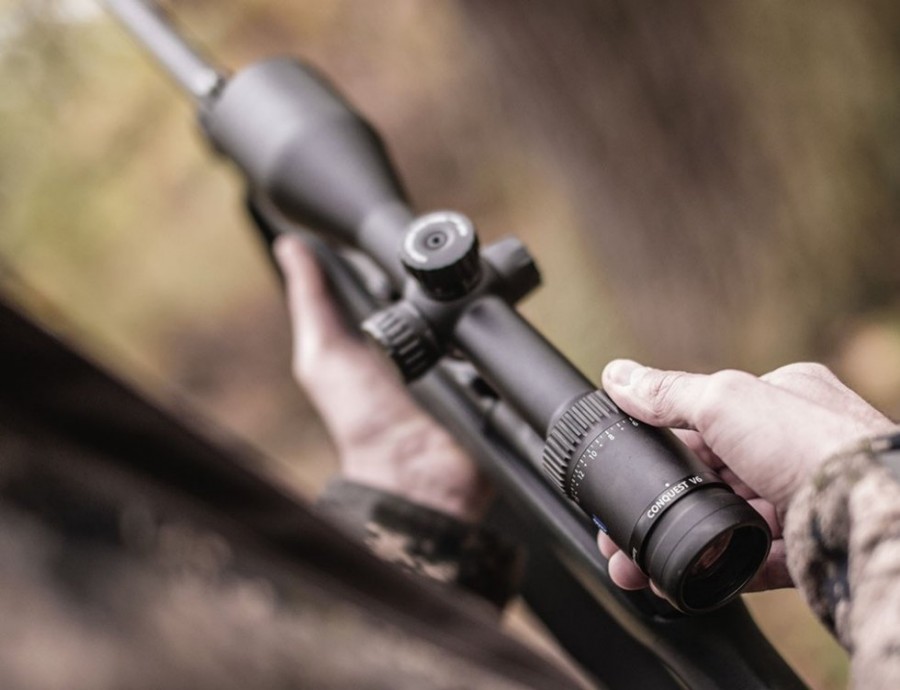
Effects of the Second World War
Many companies in Germany and Austria were forced to abandon their production and manufacture military-grade equipment for German armed forces under the Zwangsarbeiter program during WW2. The war did not end in favour of Germany and several cities were taken over by Allied and Soviet forces. The cities of Dresden and Jena were initially occupied by America but were later incorporated into the Soviet Occupation Zone. Before the transfer, Allied forces shifted some components of the business from Jena to the Contessa-Werke factory in Stuttgart. The leftover of Zeiss Jena was re-established as Kombinat VEB Zeiss Jena.
In 1946, a Zeiss production facility by the name of Opton Optische Werke GmbH was established in Oberkochen. Additional components of the business were relocated to Oberkochen and the factory was renamed to Zeiss-Opton Optische Werke Oberkochen GmbH in 1947. Soon after, this site was renamed Carl Zeiss and products made there were marketed in multiple countries, including those in the Eastern bloc. Products made at VEB Zeiss Jena were marketed under Zeiss Jena and Jena brands. In the years leading to German reunification, VEB Zeiss Jena was renamed to Jenoptik Carl Zeiss Jena GmbH.
Following the reunification in 1991, Zeiss Oberkochen acquired Jenoptik’s precision equipment division while the remainder was further split into several small businesses. As of 2021, Zeiss is headquartered in Oberkochen and has an active presence in over 14 German cities, especially Jena and Wetzlar.
Production Facilities
Zeiss sports optics products are presently manufactured at two locations in Germany:
Oberkochen, Germany (Headquarters)
The headquarters of the Carl Zeiss AG Group is located in the town of Oberkochen, where the management and sales operations of the company are based. The site houses a manufacturing facility for several products, including ophthalmic and microsurgery tools, metrology equipment, semiconductor products, and an assembly plant for camera lenses. In 2018, Zeiss shifted the production of some sports optics from Wetzlar to Oberkochen.
The factory complex in Oberkochen also houses the popular Zeiss Museum of Optics, where various Zeiss lenses, telescopic sights, binoculars, and telescopes from the past are proudly exhibited, including the Zeiss camera lens that was sent to the Moon on the Apollo 11 mission. Production at Zeiss is quite inspired by Lean Manufacturing, a Japanese philosophy for the elimination of wastes in a production environment. To improve efficiency and save time, machines at the factory are arranged in a U-shaped fashion, especially for mass-produced products.
The facility comprises state-of-the-art machining equipment and most assembly operations are manually carried out by experts. The high-quality glass is procured from Schott AG, a subsidiary of Carl Zeiss AG. All manufacturing processes are followed by strict inspection procedures, only after which, a product is certified for packaging. The site also houses an after-sales service department, which deals with warranty claims. The famous Zeiss Planetarium is also part of the Zeiss complex in Oberkochen.

Wetzlar, Germany (Previously Hensoldt AG)
The city of Wetzlar is known by many to be the center of optics manufacturing in Germany since companies like Leica, Leidolf, Minox, Befort, Schott AG, Oculus Optikgeräte, and Schmidt & Bender have production facilities in the city. The factory in Wetzlar is home to the production of Zeiss sports optics products, including riflescopes, binoculars, and spotting scopes. The factory dates back to the year 1849 when Moritz Carl Hensoldt and Carl Kellner established a factory for manufacturing telescopes and related optical equipment. The company was originally called M. Hensoldt & Soehne AG but was later renamed Hensoldt AG.
In 1928, Carl Zeiss AG went into a small partnership with the company but gradually acquired full ownership by 1968. In the following years, the production of Zeiss telescopic sights and binoculars was entirely shifted to the Hensoldt-Wetzlar factory location. Since the Hensoldt AG brand was not abolished until 2006, many a time same products were marketed under both Zeiss and Hensoldt brands. In 2006, the company put an end to the Hensoldt brand and was renamed Carl Zeiss Sports Optics GmbH. The factory has high-tech machining equipment and a rigorous inspection system for identifying non-conforming components.

Research and Development
The success of Zeiss lies behind the hard work carried out by its research and design team. Outstanding innovations like the Abbe-Koenig roof prism, P* coating, T* coating, LotuTec® multi-coating, apochromatic lens, and FL concept lens technology are a few of the many inventions crafted by engineers at Zeiss. For a continuous flow of ideas, the company invests 10 percent of its annual revenue on research and development every year. This ensures the designer never runs out of ideas and has a sizeable amount of funds to carry out prototyping and testing.
Manufacturing of Lenses
Zeiss products, such as riflescopes, binoculars, and spotting scopes contain high-quality optical components that are made from premium glass obtained from Schott AG. NBK-47 glass is acquired in the form of blocks directly from Schott’s Mainz factory location for the manufacturing of lenses for sports optics, cameras, and imaging systems. The factory in Wetzlar utilizes another form of glass procured from Japan-based Ohara for Abbe-Koenig and Schmidt-Pechan roof prisms.
Zeiss retains a long history of manufacturing optical products, which provides an edge over its competitors. Blocks of raw glass are shaped into lenses using a sequence of grinding processes that are carried out by computer-controlled grinding equipment. After glass takes the shape of an optical lens, it is sent for cleaning where it is washed using water and alcohol to remove grinding residue and unwanted particles. The lenses are checked by quality inspectors after every process to prevent any defective pieces from being sent for coating.
The last step of lens production is an optical coating, which decreases the loss of light by reflection up to 4%. Zeiss riflescopes come with signature T* and LotuTec® multi-coatings, which prevent the surface of lenses from abrasion and improve optical performance significantly, especially for use in low-light conditions. Not much is known about the LotuTec coating, except that it is a mixture of aluminum and magnesium in the form of lens coating. After the coating procedure, lenses are sent towards the assembly area where experts manually fit them into riflescope tubes.
Manufacturing of the Riflescope Tube
Zeiss uses tempered Aluminum alloy for the body of riflescopes. Aluminum material is chosen for its lightweight nature and reasonably high shock resistance, which makes it the perfect choice for products that need to withstand shock loads, especially riflescopes that constantly bear high-intensity gun recoil with every shot. Another advantage of Aluminum alloy is its resistance to atmospheric corrosion.
The factory in Wetzlar houses computer-numeric-controlled machining equipment, which is known for high accuracy and precision. High-speed lathe machines are used to produce riflescope tubes from hollow bar stocks of raw Aluminum. The next step is machining holes inside the tube for adjustment turrets, which is carried out with the help of computer-controlled milling machines. Machined parts are rigorously inspected against design tolerances after which they are sent for the next step, anodizing.
Anodizing requires crystal clear surfaces, therefore the external surfaces of tubes are cleaned and ground to produce a smooth surface. Anodizing involves applying a thin layer of oxide on the outer surface of metallic surfaces to protect them from accidental abrasion and subsequently improve corrosion resistance. Anodized parts appear to be covered with a matt-black surface coating.

Assembly of Riflescopes
After anodizing, tubes are sent for the assembly stage along with lenses and other components. Unlike machining, the assembly process is carried out manually since riflescopes are sensitive devices and therefore, require careful handling for precise alignment of optical elements. Instead of a mass production setup, riflescopes are assembled at workstations that are laid out in the form of an assembly line. The main assembly area is atmosphere-controlled and all workers wear appropriate clothing to prevent dust and unwanted particles from entering the optical cavity of riflescopes before assembly takes place.
After the devices are assembled and comprehensively inspected for defects, they are sent for the final stage of the manufacturing process, Nitrogen purging. Specialized equipment is employed to purge the insides of riflescopes with pressurized Nitrogen gas. Purging is followed one last inspection routine, which tests the scopes for Nitrogen leakage, extreme temperatures, magnification, and light transmittance. This quality check effectively rules out non-conforming scopes and clears the rest of the products for shipping.
Series Origin
Some variants of Zeiss riflescopes are produced in Germany, while entry-level and mid-range models are outsourced from Japan.
Made in Germany
The following riflescopes are made in Germany:
Victory® V8 Series
Released by Zeiss in 2014, the Victory® V8 is a line of premium-class riflescopes for hunting in the wild. Fitted with the necessary characteristics and features, the V8 has become the global standard of riflescopes in all types of hunting situations, whether it is driven hunting, stalking, stand/night hunting, or long-distance hunting. With the level of flexibility and reliability, this hunting scope lies in a class of its own. The V8 is equipped with SCHOTT HT high transmission and FL-Concept glass lenses, which are further coated with T* lens multi-coating, which provide high optical performance along with 92% light transmittance.
While many competitors, both German and abroad, have come up with outstanding specs for their hunting scopes, the Victory® V8 triumphs the competition with interesting features, such as 8X zoom, 95 mm eye relief, LotuTec® protective coating, capped turrets, windage/elevation adjustment, 92% light transmission, -3.5/+2 dioptre compensation, a second focal plane reticle with day/night illumination, compact build, ergonomic design, and Nitrogen-filled waterproofing.

The Victory V8 riflescope is available in four optical configurations:
Victory® V8 1.1-8×30
This configuration is ideal for driven hunts and stalking where a relatively lower magnification is suitable. The combination of 30 mm objective and 1.1X magnification allows a maximum field of view of 39.5 m at 100 m, which is beneficial for situational awareness during hunting for fast-moving game in unfamiliar territory. The field of view ranges from 39.5 m to 5.3 m at 100 m depending on magnification and the elevation/windage can be adjusted at 50/31.97 MRAD. If you want to hunt with both eyes open, this scope is for you. The scope is available in two reticle options: Reticle 54 and Reticle 60.
Victory® V8 1.8-14×50
This variant of V8 is an ideal device for all-rounded hunting as well as stalking in dense forests. With a sufficiently large objective, the scope is capable of absorbing a substantial amount of light which is favourable for dawn and night-time hunting conditions. The field of view range for this model is 23 m to 3.1 m at 100 m depending on magnification, while the elevation/windage can be adjusted up to 31/20 MRAD. Additionally, the 1.8-14×50 comes with parallax adjustment from 50 m to infinity. Reticle 60 is the only reticle option for this scope.
Victory® V8 2.8-20×56
If you are looking for a low-light scope in the premium class, this is the scope for you. The magnification range of 2.8X to 20X is quite generous for this category, which allows it to be used for mid-range shooting in addition to high-seat hunting and stalking in low-light situations. Field of view varies from 15.5 m to 2.1 m at 100 m and elevation/windage is adjustable at 21/13.5 MRAD. Notable features include 56 mm objective, 8X zoom, and parallax adjustment from 50 m to infinity. The scope comes fitted with Reticle 60 in the second focal plane.
Victory® V8 4.8-35×60
The 4.8-35×60 is crafted for mid-range to long-distance shooting in all light conditions. The scope offers an exciting magnification range of 4.8X to 35X, which can bring a distant game animal right in front of your eyes. For this model, the field of view varies from 8.6 – 1.2 m at 100 m and elevation/windage can be adjusted at 13/8.5 MRADwith a parallax adjustment of 50 m to infinity. If you are one of those hunters who enjoy hunting hunt big game from 200 to 600 yards away and occasionally participate in sports shooting competitions, this scope will double your confidence in the field. The scope is available in two reticle options: Reticle 43 and Reticle 60, both of which are placed in the second image plane.
Victory® HT Series
The Victory® HT series is known for ultra-bright and high-contrast imaging, thanks to its large objective size and 4X optical zoom. All Victory series riflescopes are fitted with SCHOTT HT glass lenses with Zeiss T* multi-coating, which are capable of absorbing and transmitting more than 95% light in all light conditions. Ample brightness along with sufficient optical zooming makes it the perfect choice for night/sitting and long-range hunting for countless hunting enthusiasts around the world.
Primary features of the Victory® HT riflescopes are 4X zoom, 95 mm eye relief, T* multi-coated lenses, 95% light transmission, -3.5/+2 dioptre compensation, second focal plane Reticle 60 with day/night illumination, windage/elevation adjustment, capped turrets, ergonomic design, compact build, and pressurized-Nitrogen waterproofing. The Victory® HT comes with an option of ballistic bullet drop compensation.
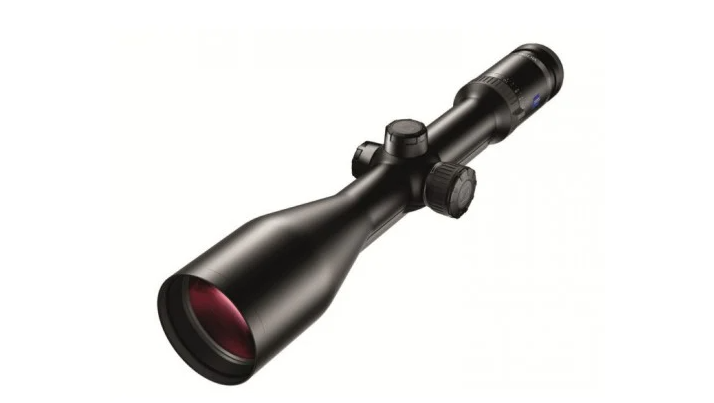
The Victory HT hunting scope comes in the following two configurations:
Victory® HT 2.5-10×50
With a sufficiently large objective lens combined with a modest magnification bracket, this variant is the best solution for stalking, stand hunting, and mid-range shooting in dense forests. The field of view range for this model is 14.8 – 4.1 m at 100 m depending on magnification, while the elevation/windage can be adjusted up to 14/14 MRAD. Additionally, the 2.5-10×50 is parallax-free at 100 m.
Victory® HT 3-12×56
A maximum magnification of 12X and 56 mm objective lens makes the Victory® HT 3-12×56 scope that can be suitably used in a multitude of hunting situations, such as long to mid-range hunting, stand hunting, night hunting as well as stalking in rough territories. Depending on magnification, the field of view ranges from 12.5 – 3.5 m at 100 m for this variant. Elevation/windage adjustments can be made up to 12/12 MRAD and it is parallax free at 100 m.
Conquest® V6 Series
The Conquest® V6 series of Zeiss riflescopes are equipped with a brilliant 6X optical zoom, giving you more control over the magnification of the device. This feature allows this device to be used in a multitude of applications, from stalking, driven, and high-seat hunting to mid-range and long-distance hunting as well shooting.
The V6 series is fitted with several high-end features, such as a variety of objective lens sizes, Zeiss T* full multi-coated optics, LotuTec® protective lens coating, 92% light transmission, capped turrets, elevation/windage adjustment, reticle illumination, -3.5/+2 dioptre compensation, lightweight anodized-Aluminum construction, compact design, Nitrogen-filled waterproofing, and optional ASV drop bullet compensation. These properties make the V6 an ultimate choice for challenging situations and demanding weather conditions.

Conquest® V6 is available in five exciting variants:
Conquest® V6 1.1-6×24
This minimalist device is the best scope out there for stalking and driven hunting, where lower magnifications are usually more effective. The 1.1X magnification enables the use of both eyes while hunting, which is important for situational awareness during close encounters with unpredictable game animals. Additionally, the scope can work as a red dot sight. Main features include 24 mm objective, 1.1X to 6X magnification, a field of view range of 38.1 – 6.6 m at 100 m, and elevation/windage adjustment of 30/30 MRAD. Reticle options include Reticle 60 and ZMOA-4.
Conquest® V6 2-12×50
The Conquest® V6 2-12×50 is the perfect riflescope for hunters who are into stalking, and night/high-seat hunting. The scope comes in a compact body, but with a 50 mm multi-coated objective lens, which makes it an excellent choice for hunting in the dawn and twilight hours. For this variant, the field of view varies from 20.5 – 3.4 m at 100 m and elevation/windage can be adjusted at 25/25 MRAD. The scope is available with Reticle 60.
Conquest® V6 2.5-15×56
Conquest® V6 2.5-15×56 is designed to excel in high-seat/night, and long-range hunting, all of which require a versatile magnification range along with a large objective lens. The 6X optical zoom allows smooth control over magnification, which prepares you for constantly changing environments and hunting conditions. For long-distance hunting, the scope comes with an optional ASV Bullet Drop Compensator. A 56 mm objective, field of view range of 16.4 – 2.7 m at 100 m, and elevation/windage adjustment of 20/20 MRAD are some of its main features. The scope is available with Reticle 60.
Conquest® V6 3-18×50
Combined with 3X to 18X magnification, 6X optical zoom, large 50 mm objective, the scope provides an interesting experience for hunters in a multitude of hunting situations and hunting conditions. Primary features include a field of view of 12.4 – 2.1 m at 100 m, compact construction, and multiple reticle options, including Reticle 6 and ballistic reticles ZBR-2 and ZMOA-2. If you are looking for a reliable scope for high-seat, night, alpine or mid-range hunting, the V6 3-18×50 is the right companion for you. Elevation/windage can be adjusted at 30/17 MRAD. Options for reticle include Reticle 6, ZMOA-2, and ZBR-2.
Conquest® V6 5-30×50
With an ultra-wide magnification band of 5X to 30X, this scope is primarily designed for long-distance hunting in all lighting conditions. Even with high-quality optics and zooming capability, the device comes in a compact Aluminum body, which is both lightweight and shockproof for greater confidence in the field. For this model, the field of view ranges from 7.4 – 1.2 m at 100 m and elevation/windage is adjustable at 18/10 MRAD. Ballistic reticle options for V6 5-30×50 are ZBR-1, ZMOA-1, and Reticle 43.
Conquest® DL Series (Discontinued)
The Conquest® DL was an upgraded variant of the Zeiss Duralyt series. First produced in 2014, the DL riflescope was designed to perform in challenging hunting situations as well as sports shooting competitions. Like its predecessor, this series was also aimed at the mid-range riflescope market with the same three optical variants as the original Duralyt series. Conquest® DL series was designed for multiple hunting situations, which included stalking, driven, stand, medium-range, and long-distance hunting.
4X optical zoom, fully multi-coated optics, LotuTec® water-repellent coating, elevation/windage adjustment, capped turrets, a second focal plane reticle with adjustable illumination, -3/+2 dioptre adjustment, Nitrogen-filled waterproofing, and a compact 30 mm main tube made of anodized Aluminum-alloy were the main features of the series. As of 2021, the Conquest® DL series riflescopes have been discontinued.

The Conquest® DL series was made available in the following configurations:
Conquest® DL 1.2-5×36
The 1.2-5×36 hunting scope can be used for driven hunting and stalking settings thanks to a lower band of magnification combined with a larger 36 mm objective lens and Reticle 60 unlike other scopes in this category. Additionally, the 1.2X magnification means the scope can replace red dot sights, allowing you to carry one less item in your hunting expeditions. Another great thing about smaller magnifications is an ultra-wide field of view, which varies from 30m – 8.5m at 100 m for this model.
Conquest® DL 2-8×42
The DL 2-8×42 is aimed at stalking, driven and high-seat situations thanks to the 2X – 8X magnification range and 42 mm objective. Since it is suited for close encounters, the scope offers a generous field of view range of 15.9 – 4.8 m at 100 m that is certainly instrumental for situational awareness while hunting unpredictable game animals. Elevation/windage adjustment can be made at 16/16 MRAD. The scope featured Reticle 60 in the second focal plane.
Conquest® DL 3-12×50
Equipped with a large 50 mm objective, Conquest® DL 3-12×50 is an excellent scope for hunting in low-light conditions, especially during the night and twilight hours. The scope is fitted with Reticle 60 and offers a wide magnification range from 3X to 12X, which is just the right amount required for stalking high-seat and driven hunting. Some features of this scope are a field of view of 11 – 3.2 m at 100 m. Elevation/windage adjustment can be made at 11/11 MRAD.
Duralyt series (Discontinued)
The Duralyt series was the line of more affordable hunting riflescopes from Zeiss. First released in 2010, the series was aimed at individuals who were looking to experience the high optical performance and built quality of Zeiss hunting scopes in the affordable price segment. The Duralyt series was made available in a variety of standard optical configurations, which were suited for multiple hunting scenarios, such as driven hunts, night hunting, stalking, mid-range and long-distance hunting. Duralyt scopes were also frequently used in sports shooting competitions where higher magnifications were not required.
Primary features of the popular series included: high-end optics, 4X optical zoom, T* optics multi-coating, LotuTec® water-repellent coating, elevation/windage adjustment, ASV+ Ballistic System, capped turrets, a second focal plane reticle with adjustable red-coloured illumination, dioptre compensation, anodized Aluminum-alloy construction, Nitrogen-filled waterproofing, compact 30mm main tube and non-slip adjustment knobs. Despite being an affordable series, the accuracy and precision of these scopes were exemplary, which is why we have incorporated them in this article. Duralyt series was discontinued when its successor Conquest® DL was launched in 2014.

Zeiss Duralyt was available in the following optical variants:
Duralyt 1.2-5×36
The Duralyt 1.2-5×36 is designed for use in close encounters with wild game, especially during driven hunting and stalking. The scope is equipped with a 36 mm objective, which is capable of gathering substantial light even during twilight hours. In addition, the scope offers a wide field of view, varying from 30 – 8.5 m at 100 m, which is especially beneficial for hunting fast-moving game, such as hares, rabbits, and wild boars. Featuring Reticle 60, the Duralyt 1.2-5×36 can replace a red dot sight at 1.2X magnification.
Duralyt 2-8×42
Equipped with a large 42 mm objective and a maximum magnification of 8X, this mid-range scope is designed to excel in near encounters with game during driven, high-seat hunting and stalking. The field of view range for this variant is 15.9 – 4.9 m at 100 m and elevation/windage can be adjusted at 16/16 MRAD. If you want to be able to pursue game on foot and while high-seated, this is the scope for you. The scope came fitted with Reticle #6.
Duralyt 3-12×50
This Duralyt scope is well-suited for low-light hunting in addition to driven, stalking, and mid-range hunting thanks to the full multi-coated 50 mm objective. Some features of this scope are a field of view of 11 – 3.2 m at 100 m and elevation/windage adjustment of 8/8 MRAD. This configuration has increasingly become the gold standard for hunting scopes with 4X optical zoom since it covers multiple hunting circumstances easily. The 3-12×50 variant was offered with Reticle 60.
Made in Japan
The following scopes are outsourced from Japan:
Conquest® V4
The Conquest® V4 series of Zeiss riflescopes was unveiled in 2018 as a successor to Conquest® DL and Duralyt range. The series is equipped with a brilliant 4X optical zoom and comes in five different optical configurations, which cover all methods of modern wildlife hunting, including stalking, driven hunting, high-seat hunting, night hunting, mid-range, and long-distance hunting.
Primary features of the Conquest® V4 series riflescopes are T* multi-coated optics, LotuTec protective coating, a second focal plane reticle with auto turn-off illumination, 90% light transmission, capped turrets, elevation/windage adjustment, parallax adjustment, 90 mm eye relief, -3/+2 dioptre compensation, 30 mm main tube, pressurized-Nitrogen waterproofing, shockproof construction, aviation-grade Aluminum-alloy body, and optional ballistic reticles. For professional hunters who are looking for high value for money, the Conquest® V4 provides an excellent entry into the world of Zeiss optics.
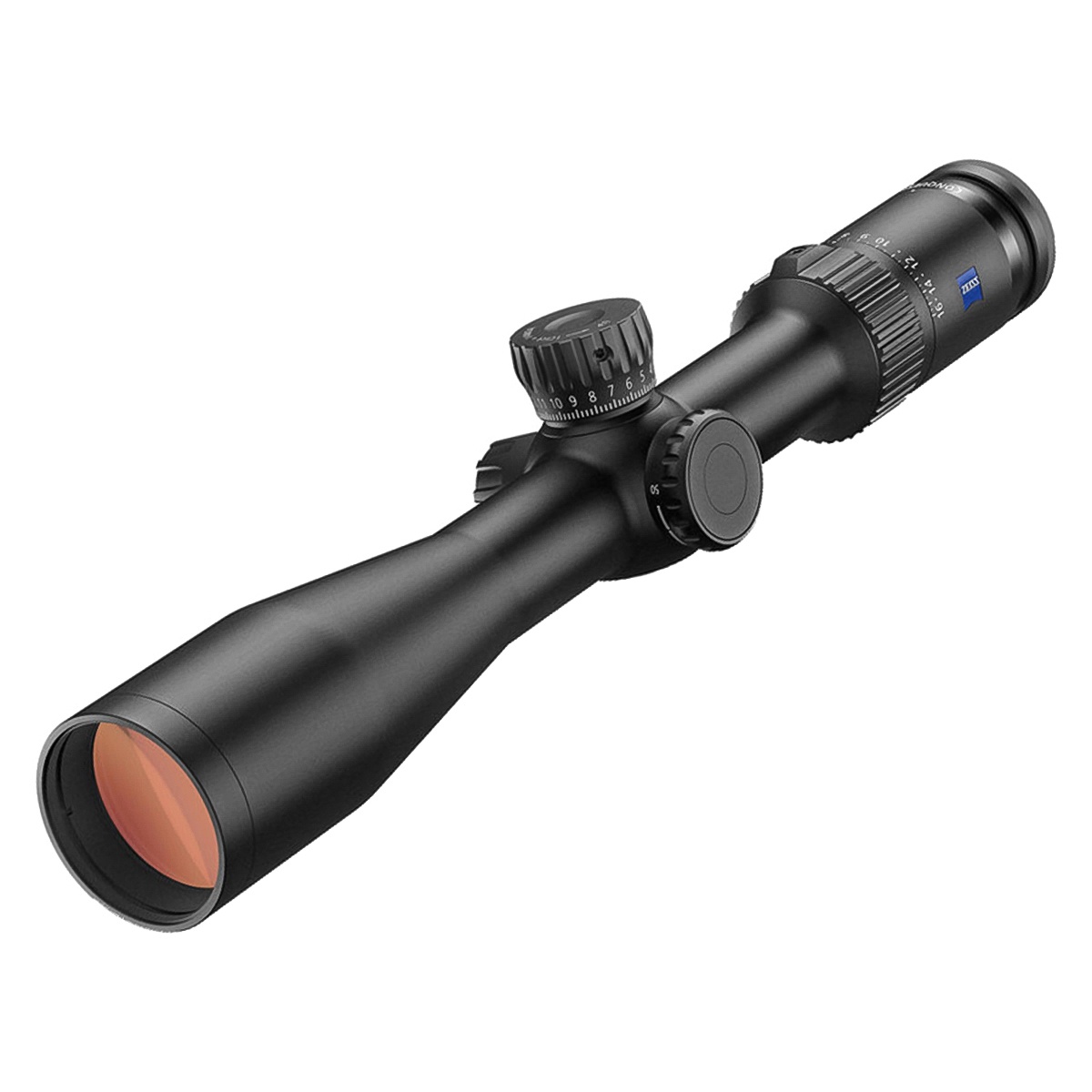
Five optical variants of Conquest® V4 are available:
Conquest® V4 1-4×24
The V4 1-4×24 is the minimalist of all hunting scopes currently offered by Zeiss. Designed for short-range shooting and driven hunts, this scope features a true 1X magnification which allows the device to be used in place of a red dot sight with 4X optical zoom. The 1X magnification is the perfect answer for situations where hunting with both eyes is necessary for rapid target acquisition. The field of view for this variant is 38 – 9.5 m at 100 m and elevation/windage can be adjusted at 30/30 MRAD. The scope is available with ZQAR-illuminated Reticle #62.
Conquest® V4 3-12×56
This variant is best suited for stalking and high-seat hunting at low-light conditions, especially during twilight hours. This is due to a versatile magnification range of 3X to 12X and a multi-coated objective lens of 56 mm diameter. Features include a field of view of 12.7 – 3.2 m at 100 m and elevation/windage adjustment of 20/20 MRAD. For hunters who are not looking for mid to long-range hunting, the V4 3-12×56 riflescope has quite a bit of exciting features to offer. Reticle options include Reticle 60 and Reticle 20 (Z-Plex).
Conquest® V4 4-16×44
If stalking and mid-range hunting interests you, the V4 4-16×44 is the scope for you. With a 44 mm objective lens and a maximum magnification of 16X, the scope is designed to be ready for hunting in high plains and the mountains. Some features of this scope are a field of view of 9.5 – 2.4 m at 100 m and elevation/windage adjustment of 23/17.5 MRAD. Multiple reticle options are available: Reticle 60, ZBi, ZMOAi-T30, ZMOAi-1, Reticle 20 (Z-Plex), ZMOA-2, and ZMOA-T30.
Conquest® V4 4-16×50
Fitted with a larger 50 mm objective, this riflescope is an ideal companion for everyday hunting situations, no matter how difficult the lighting or weather conditions are. The V4 4-16×50 works perfectly for identifying and acquiring medium to long-distance targets easily, thanks to 4X zoom and 16X magnification. Field of view varies from 8.7 – 2.2 m and elevation/windage can be adjusted at 23/17.5 MRAD. Reticle options are ZBi, ZMOAi-1, and ZMOAi-T30.
Conquest® V4 6-24x50Fi
Fitted with a 24X magnification, the V4 6-24×50 is the perfect scope for medium to long-range hunting excursions. The scope features a slim-yet-shockproof construction, which is both lightweight and purged with pressurized Nitrogen to give you the confidence required in unpredictable hunting situations. For this model, the field of view ranges from 6.3 – 1.6 m at 100 m and elevation/windage can be tuned at 23/17.5 MRAD. Reticle options include Reticle 60, ZBi, ZMOAi-20, ZMOAi-T20, ZMOAi-1, ZBR-1, and ZMOA-1.
Terra (Discontinued)
Launched in 2015, the Zeiss Terra series was targeted at customers who were looking for an entry-level series of riflescopes in under 600€ and greater value for money. The solution was to design the riflescope in Germany and outsource its manufacturing to Japan, which proved to be effective. Terra riflescopes were fitted with a series of outstanding features despite a lower price point, such as 3X optical zoom, compact 1-inch main tube, multi-coated optics, capped turrets, parallax fixed at 91 meters, second focal plane reticle, 90 mm eye relief, 100% repeatability, lightweight Aluminum construction, and Nitrogen-filled waterproofing. Reticle options include Z- Plex Reticle 20, RZ 6, and RZ 8. As of 2021, the Terra series is no longer offered by Zeiss.

The series was offered in three optical configurations:
Terra 2-7×32
This variant was meant to be used for extremely close counters with the game, especially during stalking and driven hunts. Unlike other scopes in this category, the 2-7×32 offered a larger objective for overall better image quality and brightness.
Terra 3-9×42
This configuration is ideal for several hunting methods, such as driven hunts, stalking, and high-seat hunting. Since this scope is equipped with a 42 mm objective, it is also capable of performing in low-light conditions without a problem, especially during dusk and dawn hours.
Terra 4-12×50
The 4-12×50 was designed to excel in high-seat, mid-range, and long-distance hunting scenarios. The scope offers a maximum magnification of 12X, which is sufficient for identifying game animals from a distance and acquiring precise shots.
Conclusion
Carl Zeiss AG, or Zeiss in short, is one of the largest producers of optical equipment in the world. With a history of over 175 years, the Zeiss brand has become a household name for photography lenses, film camera lenses, sports optics, microscopes, telescopes, lithography systems, metrology equipment, microsurgery, and vision care products. Similar to other European manufacturers, the production at Zeiss withstood the damage caused by the two world wars, which has significantly influenced the business strategy and performance of its products.
Zeiss is also one of the first German companies to use “Made in Germany” branding on their products. This exemplifies the high quality of German engineering, which has dominated almost every consumer product. Zeiss products are known for quality, precision, consistency, and reliability, which is why its products are sold in more than 180 countries worldwide. With an exception of one variant, all Zeiss riflescope models are either manufactured in Wetzlar or Oberkochen. The remaining entry-level variant, Conquest® V4, is outsourced from Japan, which minimizes production costs.
If you are seeking high quality and exceptional optical performance, Zeiss riflescopes are the perfect example of value for money and are likely to last a lifetime.


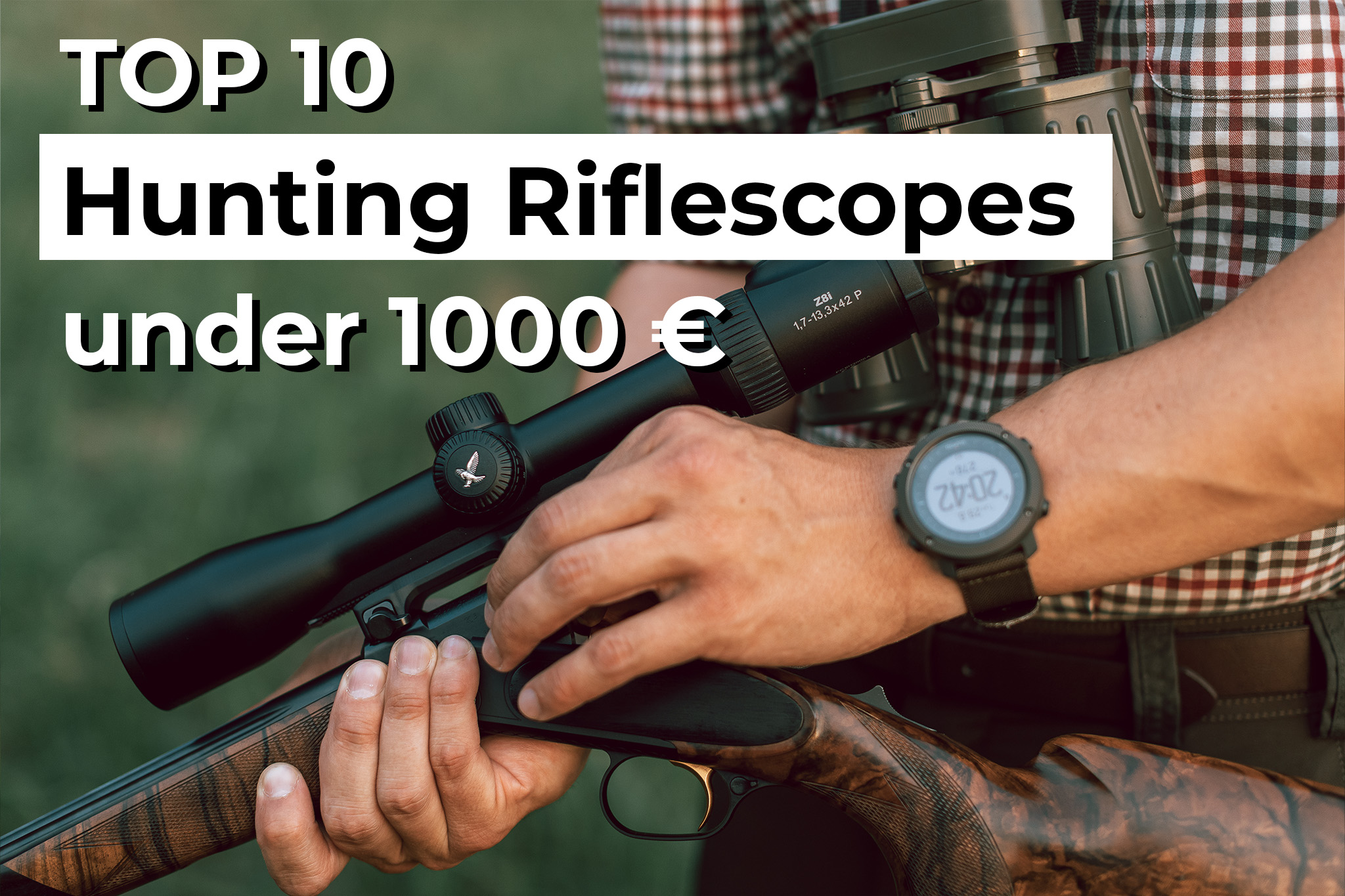
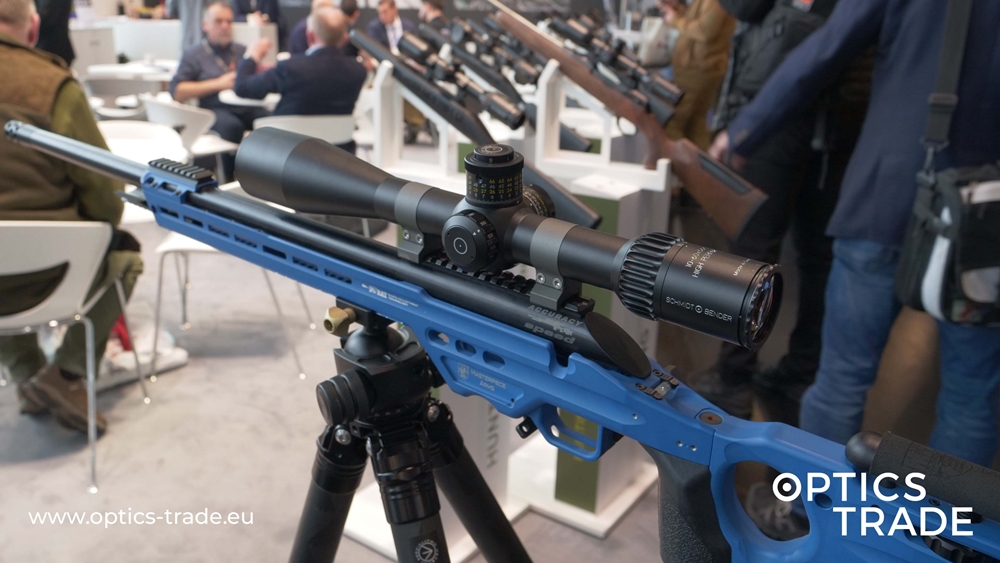



Great history and reputation. We hope that Zeiss continues to do great things. Not only for hunting (which seems to be, which is where they are most inclined), but for sport shooting and especially for new weapons (AR15 or AR10). Let’s hope they make scopes 1 -6 or 1-8 or 1-10 with ballistic turrets, oriented to tactical shooting.